imrs.php_.jpg

bml.jpg

Talk That Music Talk: Passing on Brass Band Music in New Orleans the Traditional Way is an important addition to the existing scholarship on jazz traditions in the Crescent City. It covers a relatively niche topic, but it dives deep to tell a rich story of how musical and cultural traditions are passed down to the next generation.
As Hurricane Katrina barreled down on the Gulf Coast, Bruce “Sunpie” Barnes, musician and interpretative park ranger for the New Orleans Jazz Historical Park, hastily faxed off paperwork to create Music For All Ages (MFAA), his answer to the park services’ call-to-action to develop intergenerational programs for youth under 18 and adults over 50. Barnes wanted to create a program that taught young musicians how to play via ear-training, and also the “function” of jazz as it uniquely exists in New Orleans.
To this end, Barnes recruited members of the Black Men of Labor Social Aid & Pleasure Club, an esteemed, civic-minded parading group comprised of more than a handful of professional jazz musicians, community activists and Mardi Gras Indians.
Open to young people of all ability levels from across the city, the program held its first class in January 2006 and continued with great success for several years as kids learned traditional jazz from established elders, marched in the annual Black Men of Labor parade, and performed at functions around the city and out of state.
By 2012, Barnes felt it was time the program was formally documented. For assistance, he approached Rachel Breunlin, co-director of the Neighborhood Story Project, a collaborative ethnography organization based out of the University of New Orleans. It was decided that the book should emphasize the older musicians’ feeling that jazz “came out of a struggle for equality” and that “playing music helped shape their lives for the better.” The book also set out to help “connect [jazz to] the broader social and political contexts around race and social justice.” To accomplish this, the authors took inspiration from renowned ethnographer Allen Lomax, who championed oral history as an authentic documentary style, and let the students and elders tell their own stories.
The reader is introduced to local, legendary activist Jerome “Big Duck” Smith, a co-founder of the New Orleans chapter of the Congress of Racial Equality (CORE ) and the founder of Tambourine & Fan, an organization that emphasizes youth social and political education; to community activist Fred Johnson, Jr., one of the founders of Black Men of Labor who once masked with Allison “Tootie” Montana and his Yellow Pocahontas Mardi Gras Indian tribe; to Doratha “Dodie” Smith, another New Orleans CORE founder who became a driving force behind the enduring success of Preservation Hall. Each provide fascinating firsthand accounts about what it was like to grow up in the downtown wards of New Orleans. Coming of age in a politically charged era, most nuclear families were still intact. It was a time of “respect your elders,” of “Good Morning and Good Evening.” Even children from broken homes benefited from a well-defined social hierarchy in the community at large. And music was everywhere: it was part of everyday life at home, at school, at church, and in the streets.
Woven into these stories are archived oral histories from Danny Barker, who is responsible for introducing traditional jazz to a new generation, and from Louis Armstrong, who drove home just how tightly knit the community was in his day: “When I go back to New Orleans, half of the places I called home are all torn up, but there’s still the old women down there saying, ‘Come here, boy! You know I raised you.’”
We also meet the musicians and their MFAA students, who give their personal histories and discuss their interactions, as musicians and as men. (Barnes bemoans the fact that, while girls were actively recruited for the program, the ones who joined did not stick with it). Benny Jones, Sr.’s, story is highlighted with oral histories from bass drummer “Uncle” Lionel Batiste and saxophonist Roger Lewis. We also hear from trumpeter Kenny Terry, sousaphonist Kirk Joseph, and drummer Johnny Vidacovich, and others. Among the students are John Michael Bradford, now studying on scholarship at the Berklee School of Music in Boston, and Aurelien Barnes and Caleb Windsay, currently students at local universities and founders of the new powerhouse on the scene, the New Breed Brass Band. Another student, Doyle Cooper, is now finishing up his education degree and student teaching at a West Bank elementary school. Music educator Joe Torregano and public education specialist/historian Al Kennedy also share their unique perspectives.
Though the authors suggest that the book doesn’t necessarily have to be read from the beginning to the end – “you can skip around, like an album” – it would be a disservice to the reader to do so, at least for serious New Orleans music history buffs. The stories build upon each other in a cohesive and sensible way, lending to the idea that passing on tradition is a story that has no arc: it is cyclical. Just like a good album, one might have their favorite chapters, but once it ends we often find ourselves right back at the beginning. The elders were once students. The students will become elders.
The book is bursting with black and white photographs, many of which were taken by Barnes, though terrific photos by Michael P. Smith, Eric Waters, and Jules Cahn, among others, also capture the spirit of street and classroom culture. The design scheme employs Kente cloth as a backdrop, representing Black Men of Labor’s penchant for using African textiles in their club’s suits and parade motifs. (Curiously, it also reflects the style of a portrait photography studio in Bomoko, Mali, renowned for using similar textiles as backdrops).
The stories found within Talk That Music Talk are as intricately woven as the finest homespun tapestry, made with skill and care. The thread running throughout is this: Arts programs are effective and invaluable. They point to positive paths for young people of all walks of life. It is especially delightful when elders lead the way.





















